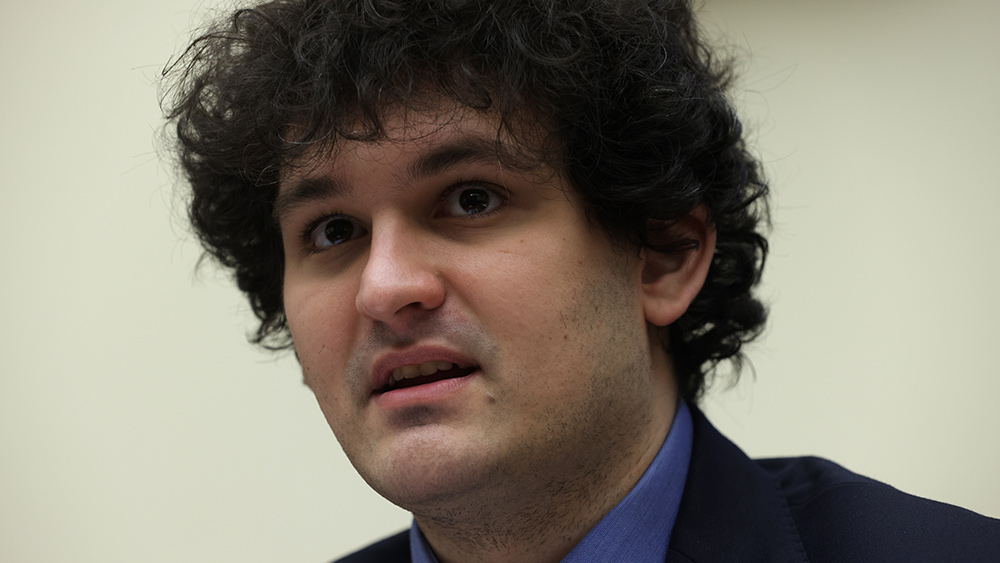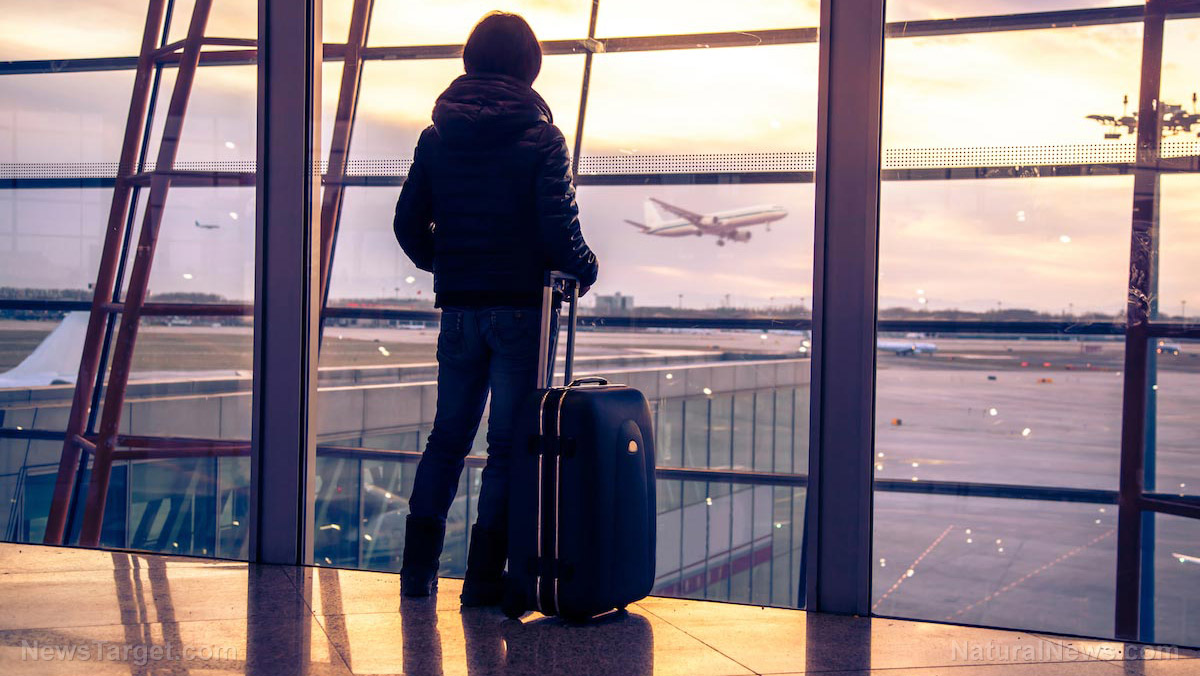More than 75,000 workers go on STRIKE against Kaiser Permanente over “offensive raise proposal”
10/11/2023 / By Zoey Sky

On Oct. 4, more than 75,000 employees with the Kaiser Permanente (KP) hospital systems went on strike due to wage and staffing issues.
Some consider the KP strike the largest healthcare strike in U.S. history.
The Coalition of Kaiser Permanente Unions (CKPU) represents more than 85,000 healthcare workers in KP facilities in seven states and the District of Columbia.
Kaiser Permanente is the largest nonprofit, private healthcare organization in the U.S. The company serves an estimated 13 million patients and runs 39 hospitals and over 600 medical offices in eight states and D.C.
The hospital system employs over 305,000 people.
Kaiser last negotiated a contract with CKPU in 2019, one year before the Wuhan coronavirus (COVID-19) pandemic broke out. On Sept. 30, that contract expired.
On Sept. 22, CKPU submitted a 10-day notice to Kaiser Permanente executives, warning that they would begin striking on Oct. 4 if a better contract is not negotiated. Since negotiations were unsuccessful, union employees began the strike early morning on Oct. 4.
According to the statement it released on Sept. 22, more than 75,000 workers in California, Colorado, Oregon, Virginia, Washington and Washington D.C. will take part, “making it the largest healthcare worker strike in U.S. history.”
The strike lasted until 6 a.m. on Oct. 7 and affected hundreds of facilities.
Back in August, KP workers asked for a $25 minimum hourly wage and increases of seven percent per annum in the first two years, followed by a 6.25 percent raise per annum for the subsequent two years.
However, Kaiser Permanente proposed minimum hourly wages of $21 to $23 for 2024, depending on the location.
Mikki Fletchall, a licensed vocational nurse based in a Kaiser medical office in Camarillo, California, said that the company is not listening to the frontline healthcare workers. Fletchall added that the workers are striking because of their patients.
“We don’t want to have to do it, but we will do it,” said Fletchall.
Kaiser Permanente defends its compensation practices amid the criticism from workers and unions alike.
Michelle Gaskill-Hames, president of Kaiser Foundation Health Plan and Hospitals of Southern California and Hawaii, said the company’s focus, for the dollars that it brings in, is “to keep them invested in value-based care.” (Related: Sen. Bernie Sanders launches probe into Amazon’s labor practices.)
CKPU slams Kaiser Permanente’s offer
In a Sept. 22 statement, the coalition condemned Kaiser Permanente executives’ offer of raising wages between only two and four percent as an “offensive raise proposal that fails to keep up with the cost of living for anyone.”
CKPU also accused the management of committing “unfair labor practices,” seeking to slash the employees’ performance-sharing bonus to 50 percent of its current value, failing to address the current staff shortage and trying to eliminate protections against subcontracting and outsourcing.
CKPU also called out KP executives for wanting remote workers to permanently report to work at a Kaiser facility “with only two weeks’ notice.”
The coalition also warned that if Kaiser Permanente continues to commit unfair labor practices, it is prepared to engage in “another longer, stronger strike in November to protest Kaiser’s unfair labor practices.” The upcoming strike would see additional coalition members from Washington (whose contract expires on Oct. 31) join the protest.
According to the union, KP executives continue to bargain in bad faith over the solutions that are essential to addressing “the Kaiser short-staffing crisis and the safety and well-being” of patients and workers is on the line.
Employees on strike crucial to the hospital system
Even though only 75,000 out of Kaiser Permanente’s over 305,000 employees participated in the strike, the protest involves employees who are necessary to providing patient care at the hospital system:
- Emergency medical technician (EMT)
- Nurses
- Respiratory therapists
- Ultrasound sonographers
- Radiology and X-ray technicians
Employees from hundreds of other positions also joined the CKPU strike.
In Georgia, Hawaii and Washington, no patients are expected to be affected by the strike, reported a Kaiser spokesperson. In these three states, operations would continue as normal.
However, in Virginia and the District of Columbia, pharmacists and optometrists joined the strike.
In California, Colorado and Oregon, the strike’s effects on patients could be “more substantial,” added the KP spokesperson.
The spokesperson added that Kaiser Permanente “had detailed continuity plans in place in all of these markets that include the use of non-represented and management staff along with contingency workers.” Additionally, all physicians were available during the CKPU strike.
However, John August, the former executive director of the CKPU, said working with fewer employees would be difficult in the hospital system.
August said doctors and managers reported for work amid the strike. And while it was easy to say that it was not going to be that disruptive, August acknowledged that the strike was “extremely disruptive.”
During a smaller strike in 2022 that involved mental healthcare workers at Kaiser Permanente, some patients had their appointments canceled.
Staff shortage is a key issue being raised by the labor coalition. In an interview, Henry Perez, an intensive care unit secretary at Kaiser Permanente in Modesto, California, said it often feels like “there is no concern for short-staffing and patient care.”
Perez added that there are days when he has to do the work of two, three or even four other unit assistants. He warned that a shortage of workers also harms patients because they often have to wait longer for assistance.
On top of having his unit, Perez said the entire hospital, which has 102 patients that he is responsible for, often causes him burnout, mental anguish and stress. He added that he and the nurses he supports are often working until they are exhausted because of staffing issues.
According to Axios, Kaiser Permanente is allegedly “aggressively recruiting to fill more positions.” KP has reached a deal with the labor coalition to hire 10,000 new workers by the end of October, a goal it is confident it will reach.
The three-day walkout of Kaiser Permanente healthcare employees ends on Tuesday, Oct. 10, because they can only strike for three days under federal rules.
Data from the Cornell University School of Industrial and Labor Relations has revealed that more than 320,000 workers have participated in at least 230 strikes so far in 2023.
That is higher than the roughly 224,000 workers who participated in roughly 420 strikes in 2022, due in large part to tens of thousands of striking workers with the Screen Actors Guild – American Federation of Television and Radio Artists (SAG-AFTRA) and Writers Guild of America (WGA).
Visit Collapse.news for more stories about the declining state of America’s hospital systems.
Watch the video below as President Joe Biden misses the mark with union workers.
This video is from the NewsClips channel on Brighteon.com.
More related stories:
Pilot shortage and union demand could make passenger flights unaffordable for ordinary Americans.
State legislators would rather resurrect child labor than pay adult workers better.
Sources include:
Submit a correction >>
Tagged Under:
Bubble, CKPU strike, Collapse, economic riot, enslaved, finance riot, freedom, healthcare, healthcare strike, hourly pay, Kaiser Permanente, labor practices, Liberty, money supply, outrage, revolt, scarcity, staffing shortages, Tyranny, unionization, uprising, welfare
This article may contain statements that reflect the opinion of the author
RECENT NEWS & ARTICLES
COPYRIGHT © 2017 BUBBLE NEWS




















